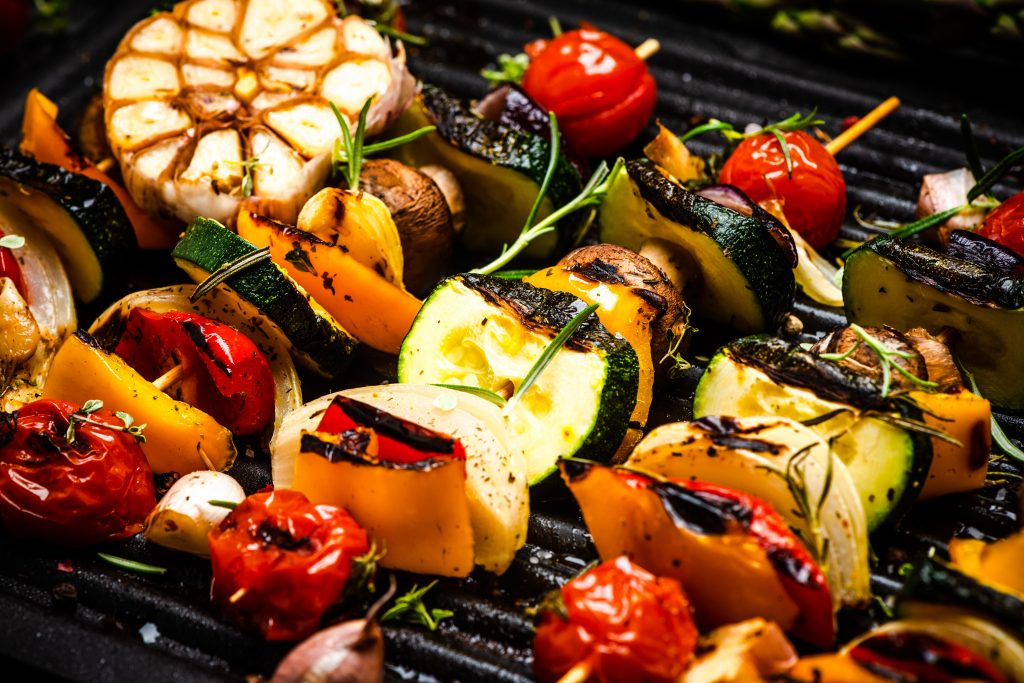Healthy Grilling Tips
by Caitlund Davidson
 The practice of barbecuing can increase the quantity and frequency of our fresh or processed meat intake.
The practice of barbecuing can increase the quantity and frequency of our fresh or processed meat intake.(Originally published in the August 2021 edition of The Walleye)
Grilling is one of the great joys of summer. Cooking over an open flame simply gives foods a unique flavour. Not to mention that gathering around the grill with friends and cooking dinner outside can be more fun than staying in the kitchen. However, many people are surprised to hear that grilling does have its health risks.
Grilling meat can produce chemicals that could increase your risk of cancer. Studies have found that charring, burning, or grilling meat, fish, or poultry at high temperatures can generate compounds called polycyclic aromatic hydrocarbons and heterocyclic amines that can alter our DNA in a way that could lead to cancer. Despite these concerns, no one is suggesting that you throw away your barbecue. Instead, we asked Holly Freill, a registered dietitian with the renal program at Thunder Bay Regional Health Sciences Centre (TBRHSC), how we can grill the safest, most delicious foods without the health risks.
“It is important to consider how our eating patterns may change once we start cooking outdoors, and the foods you are putting on the grill,” says Freill. “Do a quick survey; does your family eat more meat in the summer? Maybe you eat the same amount but the meat is more processed. All meat is not created equal so paying attention to how eating patterns might change is the first step toward a healthy diet and eating mindfully.”
The practice of barbecuing can increase the quantity and frequency of our fresh or processed meat intake. Consuming red meat (beef, pork, and lamb) or processed meats (deli meat, hot dogs, sausages, etc.) can also increase your risk of developing colon cancer. One way that we can grill healthier is to choose meat wisely.
“Foods like hot dogs have a number of additives like sodium, nitrates, and phosphates,” explains Freill. “When used as additives, these chemicals behave differently in the body than when they occur naturally and research suggests their effects are much more harmful. Try choosing leaner cuts of meat when barbecuing but also consider your portion size.”
With so many tasty options to choose from, it can seem overwhelming to plan a meal and many people will resort to red meat. For those of us that fall into this category, Freill has the following advice. “If you choose to eat red meat, try skewering it into kabobs. Alternating between meat and vegetables can help cut down on the portion size while helping to sneak in a couple more vegetables onto your plate. Fruits like pineapple and peaches work well on the grill and add a great addition to your entrée. Remember, meat on a bun is not a complete meal—you need a fruit or vegetable to round it out.”
Freill stresses the many reasons to increase our plant intake.
Not only is the environmental impact of a plant-based diet more favourable than a diet that emphasizes meat from grazing livestock, it also has health benefits. “Fruits and vegetables are high in fibre and micronutrients, and low in calories,” says Freill. If we aren’t eating vegetables with all meals and snacks then we likely aren’t eating enough plants throughout the day.”
One way to boost our plant intake is to include lots of colour on our plate. This can make vegetables seem more appealing. Using peppers, gourds, root vegetables, fruit, and mushrooms is a great way to make a plate of grilled vegetables look even more appetizing—and they taste good too! It can also be a great way to get kids to consume a well-rounded barbecue dinner.
Next time you are planning to fire up the grill, keep these healthy grilling tips in mind to ensure that you are keeping yourself and family safe. If you are tired of the same old barbecue menu and looking for some healthy menu options, visit the Dietitians of Canada website at bit.ly/overthegrill for more recipes.